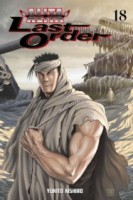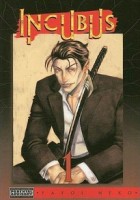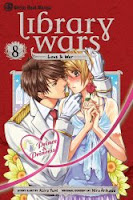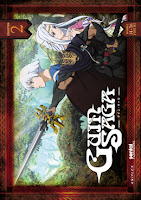My News and Reviews
So, apparently last week was Shark Week, an annual event on the Discovery Channel. I don’t watch much television or pay attention to programming schedules, therefore it was a complete coincidence that both of the manga that I reviewed last week happened to include sharks! First up was my review of the deluxe hardcover omnibus of Junji Ito’s (comedy?) horror manga Gyo: The Death-Stench Creeps. It’s an incredibly gross and absurd manga and will certainly not be to everyone’s taste. I was entertained by its outrageousness, but overall much prefer his earlier work Uzumaki: Spiral into Horror. The second review last week was of The Legend of Kamui, Volume 1, an influential historical drama by Sanpei Shirota. The manga was actually one of the earliest series to be released in English back in the 1980s. Fortunately, it’s still relatively easy to find even though it’s long been out-of-print. I really wish that more of the series had been translated, though; The Legend of Kamui is excellent.
A couple of interesting things that I came across last week: Shojo Beat’s tenth anniversary celebration continues with five questions for Julietta Suzuki and Haikasoru posted a translation of a conversation between authors Paolo Bacigalupi and Taiyo Fujii from 2013. (I recently reviewed Fujii’s debut novel Gene Mapper, and reviewed Bacigalupi’s novel The Windup Girl, which has been very well received in Japan, at my old review blog Experiments in Reading several years ago.) Last week was the San Diego Comic-Con, but most of the news and announcements seemed to be repeats of Anime Expo. However, there was one newly announced license that was huge: Udon Entertainment will be releasing Riyoko Ikeda’s influential shoujo classic Rose of Versailles! Among other good news, Udon rescued Moyoco Anno’s marvelous shoujo series Sugar Sugar Rune, which makes me very happy. (I reviewed Del Rey’s edition of the first volume a couple of years back.) Udon will also be releasing Yomi Sarachi’s Steins;Gate manga. Kodansha has picked up Kousuke Fujishima’s manga series Paradise Residence. Dark Horse will be re-releasing Hiroaki Samura’s epic Blade of the Immortal in an omnibus edition which is great news since some of the individual volumes are out-of-print and hard to find. (The series is also a favorite of mine.) A couple of other interesting SDCC/manga-related posts: myths from the Manga Publisher Roundtable and a summary of 2015’s Best and Worst Manga panel. Oh, and Shigeru Mizuki’s Showa: A History of Japan won an Eisner Award!
Quick Takes
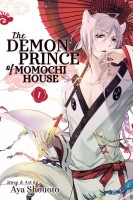 The Demon Prince of Momochi House, Volume 1 by Aya Shouoto. There were mainly two things that initially drew my attention to The Demon Prince of Momochi House, the beautiful and somewhat provocative cover illustration and the promise of beautiful and somewhat provocative yokai. Himari Momochi unexpectedly inherits a house when she turns sixteen. As an orphan, it’s the only connection that she has to a family that she has never known. But when she arrives, she discovers a couple of complicating factors: the house is a gateway between the human and supernatural realms, and it is already occupied. Honestly, the story’s setup feels a little forced and employs a few well-worn shoujo tropes; it remains to be seen whether or not Shouoto will do anything clever with them. However, the artwork is attractive and I actually really do like the underlying premise of the manga. Although I wasn’t blown away by the first volume of The Demon Prince of Momochi House, I did enjoy it. The series has great potential and the manga certainly delivers on its promise of beautiful spirits. While I’m not in a rush to read the next volume, I’ll likely continue with the series to see if it develops into something really special or if it will merely remain something that is enjoyable in passing.
The Demon Prince of Momochi House, Volume 1 by Aya Shouoto. There were mainly two things that initially drew my attention to The Demon Prince of Momochi House, the beautiful and somewhat provocative cover illustration and the promise of beautiful and somewhat provocative yokai. Himari Momochi unexpectedly inherits a house when she turns sixteen. As an orphan, it’s the only connection that she has to a family that she has never known. But when she arrives, she discovers a couple of complicating factors: the house is a gateway between the human and supernatural realms, and it is already occupied. Honestly, the story’s setup feels a little forced and employs a few well-worn shoujo tropes; it remains to be seen whether or not Shouoto will do anything clever with them. However, the artwork is attractive and I actually really do like the underlying premise of the manga. Although I wasn’t blown away by the first volume of The Demon Prince of Momochi House, I did enjoy it. The series has great potential and the manga certainly delivers on its promise of beautiful spirits. While I’m not in a rush to read the next volume, I’ll likely continue with the series to see if it develops into something really special or if it will merely remain something that is enjoyable in passing.
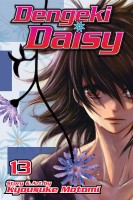 Dengeki Daisy, Volumes 13-16 by Kyousuke Motomi. It’s been awhile since I’ve read Dengeki Daisy, but it is a manga that I tend to enjoy. Since the final volume of the series was released in English relatively recently, I figured it was about time for me to catch up. Dengeki Daisy isn’t always the most realistic or believable series—frequently things will happen because they’re convenient for the sake of moving the story forward or are being used as a punchline rather than being a convincing development—but it’s still pretty great. The manga also handles the romance between Teru and Kurosaki very well, especially considering the eight-year gap in their ages. Interestingly, while the last volume quickly wraps up the main story, it’s actually mostly devoted to a small collection of side and bonus stories, generally of a humorous nature. The volume also includes Motomi’s debut manga, “No Good Cupid.” It’s kind of a fun send off for the series, especially as the final story arc is focused more on intense action and drama rather than the manga’s humor or the quirkiness of its characters. However, I always find Motomi’s author notes and commentary to be endlessly entertaining. I definitely plan on reading more of her work in the future.
Dengeki Daisy, Volumes 13-16 by Kyousuke Motomi. It’s been awhile since I’ve read Dengeki Daisy, but it is a manga that I tend to enjoy. Since the final volume of the series was released in English relatively recently, I figured it was about time for me to catch up. Dengeki Daisy isn’t always the most realistic or believable series—frequently things will happen because they’re convenient for the sake of moving the story forward or are being used as a punchline rather than being a convincing development—but it’s still pretty great. The manga also handles the romance between Teru and Kurosaki very well, especially considering the eight-year gap in their ages. Interestingly, while the last volume quickly wraps up the main story, it’s actually mostly devoted to a small collection of side and bonus stories, generally of a humorous nature. The volume also includes Motomi’s debut manga, “No Good Cupid.” It’s kind of a fun send off for the series, especially as the final story arc is focused more on intense action and drama rather than the manga’s humor or the quirkiness of its characters. However, I always find Motomi’s author notes and commentary to be endlessly entertaining. I definitely plan on reading more of her work in the future.
 NightS by Kou Yoneda. Only a few of Yoneda’s boys’ love manga have been released in English, but I enjoy her work immensely and would love to see even more of it licensed. NightS is a collection of stories: “NightS,” about a transporter for the yakuza and an older man with whom he becomes entangled (in more ways than one); “Emotion Spectrum,” a high school romance with a bit of a twist on the usual sort of love triangle; and “Reply,” featuring the blossoming relationship between a car salesman and a mechanic. Although the anthology is called NightS, “Reply” is actually the longest and most involved work in the volume. But even the shorter manga feature well-developed stories and characters. They each come across as an individual with a distinctive personality. This is a particularly important aspect of Yoneda’s manga since the plots tend to be very character focused and driven—people and their relationships, romantic or otherwise, are key to her stories. There is a maturity to the storytelling, as well. And a great sense of humor. Though they aren’t comedies, at times the manga collected in NightS can be quite funny. Also, Yoneda’s artwork is excellent; especially impressive is her use of light and shadow to create drama, mood, and atmosphere.
NightS by Kou Yoneda. Only a few of Yoneda’s boys’ love manga have been released in English, but I enjoy her work immensely and would love to see even more of it licensed. NightS is a collection of stories: “NightS,” about a transporter for the yakuza and an older man with whom he becomes entangled (in more ways than one); “Emotion Spectrum,” a high school romance with a bit of a twist on the usual sort of love triangle; and “Reply,” featuring the blossoming relationship between a car salesman and a mechanic. Although the anthology is called NightS, “Reply” is actually the longest and most involved work in the volume. But even the shorter manga feature well-developed stories and characters. They each come across as an individual with a distinctive personality. This is a particularly important aspect of Yoneda’s manga since the plots tend to be very character focused and driven—people and their relationships, romantic or otherwise, are key to her stories. There is a maturity to the storytelling, as well. And a great sense of humor. Though they aren’t comedies, at times the manga collected in NightS can be quite funny. Also, Yoneda’s artwork is excellent; especially impressive is her use of light and shadow to create drama, mood, and atmosphere.

